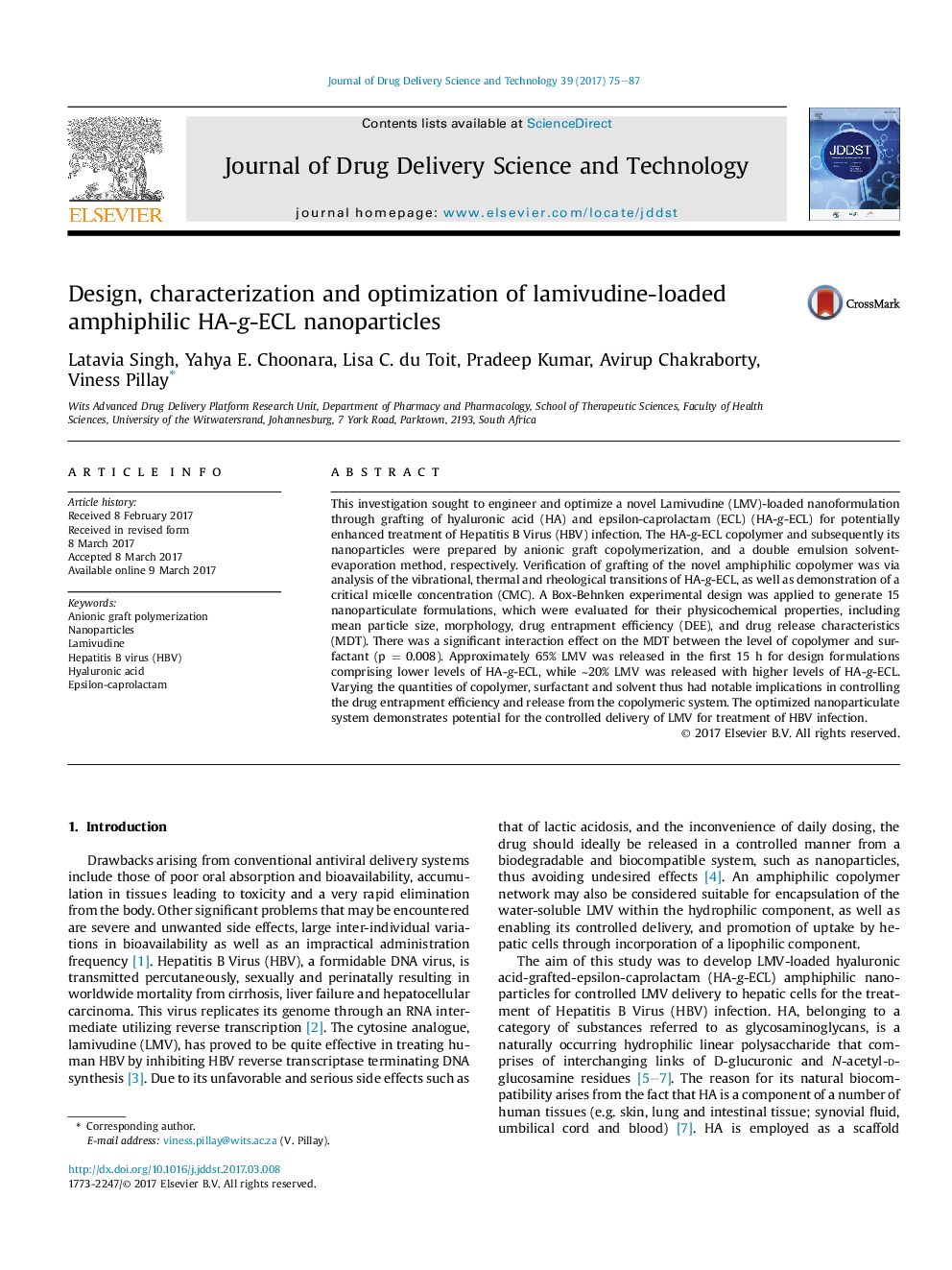| Article ID | Journal | Published Year | Pages | File Type |
|---|---|---|---|---|
| 5548126 | Journal of Drug Delivery Science and Technology | 2017 | 13 Pages |
This investigation sought to engineer and optimize a novel Lamivudine (LMV)-loaded nanoformulation through grafting of hyaluronic acid (HA) and epsilon-caprolactam (ECL) (HA-g-ECL) for potentially enhanced treatment of Hepatitis B Virus (HBV) infection. The HA-g-ECL copolymer and subsequently its nanoparticles were prepared by anionic graft copolymerization, and a double emulsion solvent-evaporation method, respectively. Verification of grafting of the novel amphiphilic copolymer was via analysis of the vibrational, thermal and rheological transitions of HA-g-ECL, as well as demonstration of a critical micelle concentration (CMC). A Box-Behnken experimental design was applied to generate 15 nanoparticulate formulations, which were evaluated for their physicochemical properties, including mean particle size, morphology, drug entrapment efficiency (DEE), and drug release characteristics (MDT). There was a significant interaction effect on the MDT between the level of copolymer and surfactant (p = 0.008). Approximately 65% LMV was released in the first 15 h for design formulations comprising lower levels of HA-g-ECL, while â¼20% LMV was released with higher levels of HA-g-ECL. Varying the quantities of copolymer, surfactant and solvent thus had notable implications in controlling the drug entrapment efficiency and release from the copolymeric system. The optimized nanoparticulate system demonstrates potential for the controlled delivery of LMV for treatment of HBV infection.
Graphical abstractDownload high-res image (161KB)Download full-size image
